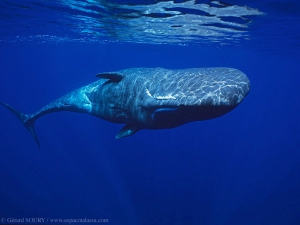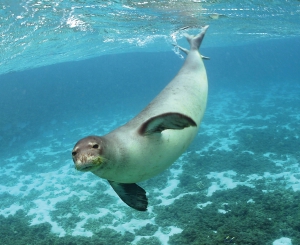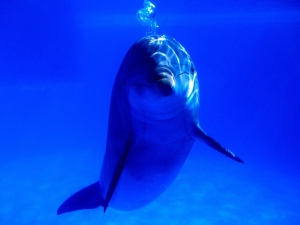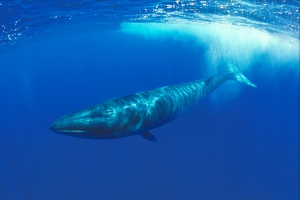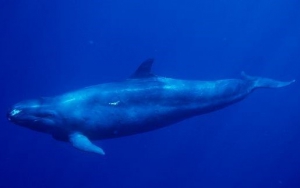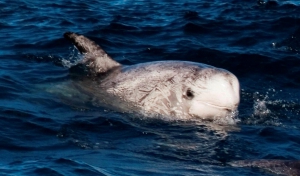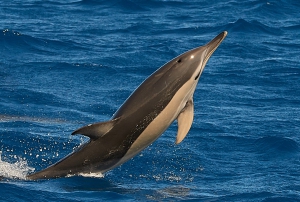Only a few Greeks know that in Greece there are whales, even though Aristotle had recorded their existence. It is noteworthy that south Crete is the only place in the world where one can admire the whales all over the year and is the point where they are believed to reproduce.
The Mediterranean Monk Seal (scient. Monachus monachus) is one of the most endangered marine mammals in the world, with a few hundred animals remaining. The name comes from the folds of the neck that remind the monk robes or from its round head covered with short hairs, giving it the appearance of a medieval friar. The name may also reflect the fact that it lives a solitary existence relative to other species that collect in large colonies.
The Common Bottlenose Dolphin (scient. Tursiops truncates) is a common species in Greek waters, widespread throughout the world. It is often found near the coasts of Crete, even very close to the shore, forming groups of up to 100 individuals. On the other hand, meeting that in the open sea is very rare. It is named bottlenose due to the animal having a short rounded snout that looks like a bottle.
The fin whale (scient. Balaenoptera physalus), finback whale, razorback, or common rorqual is the second largest mammal in the world, after the blue whale. In Greece there are fin whales, some of which have been observed occasionally in the deep waters of south Crete. The number of fin whales in the Greek waters has not been estimated, but it is estimated at 2000 individuals throughout the Mediterranean.
False Killer whale (scient. Pseudorca crassidens) is a large dolphin (not whale), which is very rare in the waters of Greece and more frequent in the Eastern Mediterranean (Israel, Cyprus). It is distributed in warm waters worldwide, but has not been studied in depth yet. There has never been reported a pseudorca in Crete, but the occasional visits of this kind in the Aegean Sea, make its existence around Crete almost certain.
The striped dolphin (scient. Stenella coeruleoalba) is the most common species of dolphin in Greek waters. It is usully found far from the coasts, in the open Aegean and Ionian Sea, south of Crete or close to the coasts if the water is very deep. It lives in flocks of 50-100 individuals, and often coexists with other dolphins, such as the Common dolphin and Risso’s dolphin.
Risso’s dolphin (scient. Grampus griseus) is a species of dolphin that lives in all oceans of the world. This species has relatively small populations in all the Greek seas, with the seas of Crete being among them (mainly sea north of Crete).
The common short-beaked dolphin (scient. Delphinus delphis) was once the most common dolphin species in Greece, but unfortunately it is nowadays threatened with extinction. Indeed, the name “common” was firstly given by Aristotle in ancient times, due to its abundance in Greek Seas. Today it lives mainly in the Ionian Sea and is rarely found in Crete.
- 1
- 2











